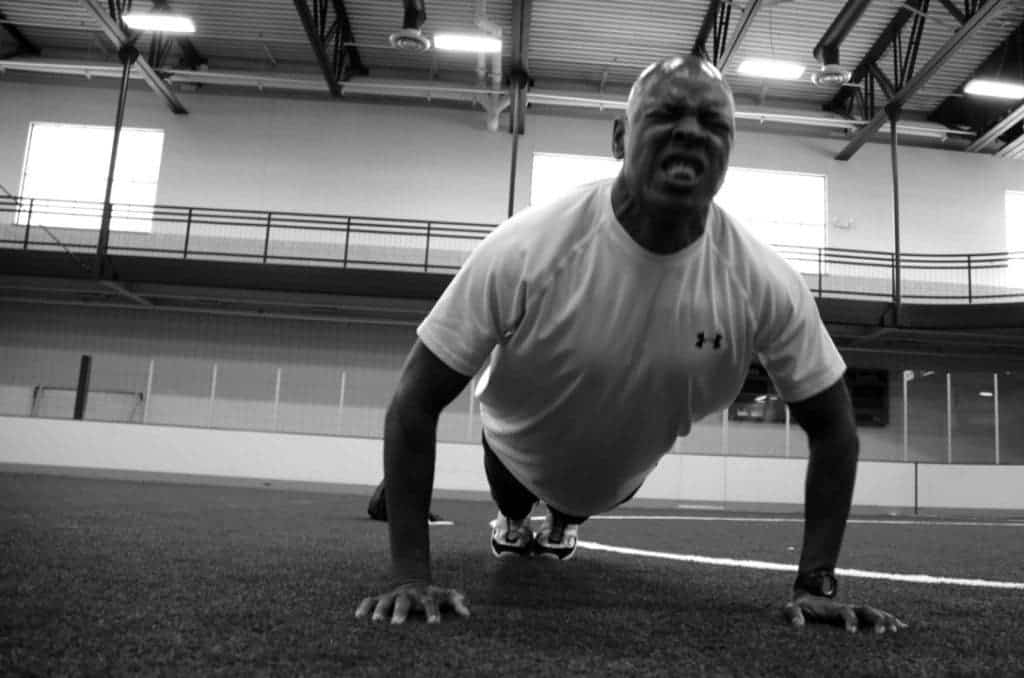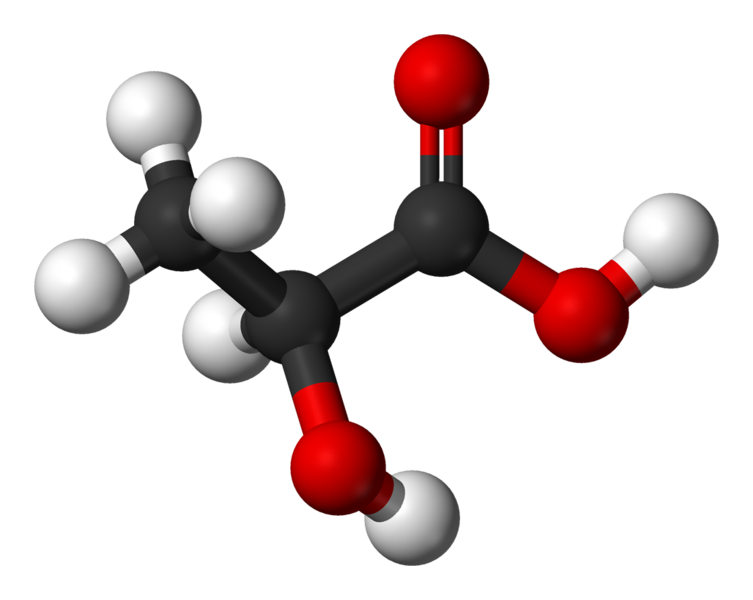Lactic acid (or lactate) has long been bemoaned as a metabolic waste product that makes our muscles tired and sore after use. But is it, really?

Tiredness comes in many flavors, from needing a nap to needing a vacation to deleting your social media and going to live in the woods. Today, however, we’re going to talk about physical tiredness — the one caused by physical exertion. In science-speak, it is the inability of muscles to maintain optimal performance following long or intense periods of use. While we can all empathize with needing rest after working hard, exactly why and how our muscles produce the feeling of tiredness isn’t immediately obvious — and it’s not even completely settled.
So let’s dig into the issue.
Acidic work environments(?)
Back in 1922, German physician Otto Fritz Meyerhof and British physiologist Archibald Vivian Hill co-won the Nobel Prize for Physiology or Medicine for their work with lactic acid.
The duo had used frog legs sealed in air-tight jars to show that muscles turn glycogen into lactic acid when faced with a lack of oxygen. Their work was significant at the time as it looked into anaerobic metabolism, the process through which our bodies use stored sugars (glycogen) for energy without needing oxygen.

Meyerhof and Hill used electric pulses to make muscles in the legs contract. They observed a build-up of lactic acid in the tissues as a result of anaerobic processing of glycogen. And then, the muscles stopped working (contracting) after repeated stimulation. They concluded that lactic acid was responsible for the drop in performance, i.e., that the build-up of lactic acid caused the muscles to ‘tire out’. The idea was that, as lactate builds-up in the muscles, it increases their acidity (lowers their pH value), thus impairing their activity.
Later on, other research showed that the findings do apply to detached amphibian muscle — but not to those in living mammals. Anaerobic metabolism is the primary source of energy for short bursts of activity in anurans (frogs), according to Robert W. Putnam, 1979; this is the type of activity Meyerhof and Hill studied. However, for sustained activity, aerobic metabolism takes the front seat. Furthermore, there are significant differences in how a whole organism handles the build-up of lactic acid in muscle tissue compared to detached muscles.
In other words, later findings suggested that the duo jumped the gun and inferred causation from correlation when this wasn’t the case.

Lactic acid, it turns out, functions as fuel for muscles when oxygen isn’t readily available; its accumulation was also shown not to inhibit muscles’ ability to contract. It’s not responsible for muscle soreness (delayed onset muscle soreness, or DOMS), either, other research has shown (Sahlin K., 1986; D. Roberts, D. J. Smith, 1989).
Empirical observation also helped to steer researchers towards seeking other causes of physical tiredness. For example, highly prolonged, low-intensity exercise, the kind that’s most likely to leave your muscles feeling sore in the next few days, generates very little lactic acid.
Effect, not cause
George Brooks, a professor of integrative biology at the University of California, Berkeley published “The Science and Translation of Lactate Shuttle Theory” in the journal Cell Metabolism last year. The work is a review of our previous understanding of lactic acid and pokes several holes in said knowledge.
He contends that, while lactic acid is typically labeled as ‘waste’ produced by muscles because blood lactate levels rise during extreme exercise, the substance isn’t the cause of but actually an attempt to prevent fatigue.
“It’s a historic mistake,” Brooks said, according to Robert Sanders (Futurity). “It was thought that lactate is made in muscles when there is not enough oxygen. It has been thought to be a fatigue agent, a metabolic waste product, a metabolic poison.”
“But the classic mistake was to note that when a cell was under stress, there was a lot of lactate, then blame it on lactate. The proper interpretation is that lactate production is a strain response; it’s there to compensate for metabolic stress. It is the way cells push back on deficits in metabolism.”
He explains that the shot of adrenaline we receive after sustaining injury activates our sympathetic nervous system, which in turn ramps up lactic acid production. This leads to the elevated blood levels of this acid seen during illness or injury, which is a natural part of the body’s healing processes.
Brooks found that muscle cells produce lactate pretty much all the time, not just when oxygen is in short supply. This lactate is then used to support the activity of cells and organs throughout the body. He explains that lactate is a major energy source for our bodies, and is produced from glycogen stored in muscles. Glycogen functions similarly to fatty acids (stored in fat), he explains.

Image via Foodiecrush.
Under the “lactate shuttle” model, certain “producer” cells manufacture the compound while “consumer” cells burn it for energy. White or glycolytic muscle (called ‘fast-twitch’ muscle, think fish or poultry) is used for rapid bursts of activity, and white muscle fibers in our bodies convert glycogen and glucose into lactate for neighboring red ‘slow-twitch’ fibers (think beef or pork).
Brooks does note that lactate can be a problem if not used, but also that mitochondria burn it preferentially when available.
Ok so…. it’s not lactic acid that makes us tired and sore. That’s cool. But, what does?
Good ol’ fashioned damage

Muscle soreness and fatigue are, most likely, the result of trauma sustained by muscles during intense exertion.
Exercise damages muscles. The motion a muscle makes during activity is known as concentric contraction — it shortens to generate force. There’s also eccentric contractions — when a muscle contracts but also elongates at the same time, due to a greater force being applied on it from outside.
Now, muscles are made up of bunches of very long filaments; it’s these filaments that contract or relax to generate force inside a muscle. Called myofibrils, they do bunch up in progressively-thicker structures, but the fact of the matter remains that individual myofibrils are thin and relatively fragile. Loads applied during muscular activity, be it loads generated by concentric or eccentric contractions, can break individual myofibrils. Resistance training, and particularly high loading during eccentric contractions, results in delayed onset muscle soreness (DOMS) because they break myofibrils.
By itself, this isn’t great cause for concern. Cells break all the time, and they’re repaired pretty much all the time, too. Our bodies take this damage as a cue that more robust muscles are needed, so the healing process also involves the creation of new myofibrils (the sought-after ‘gainz’). The process by which our bodies go about repairing muscle tissues, however, isn’t very pleasant. Damage in our muscle fibers causes white blood cells to move in, which leads to inflammation — if you have a gym-head buddy, this sensation is what he or she refers to as ‘the burn’. White blood cells called macrophages move into the damaged muscles because they need to ‘eat’ broken myofilaments to make room for new ones. Some 24 to 48 hours after the damage is incurred, necrosis of the broken myofibrils sets in, the damaged cells are removed, and new ones develop or start developing.
In effect, while lactic acid has long been seen as the cause of physical tiredness, researchers have shown that it’s associated with but not the cause of the feeling. Physical tiredness and soreness instead come from the damage our muscles sustain while working, and the more intense the task, the more damage they take.
In effect, we’re working our muscle cells to death when we move; just a few for mundane activities, and more for more intense work. Feelings of tiredness are how muscles signal the extent of this damage, and the associated drop in performance, to our brain. The sensation of soreness is partly created by that damage, and partly by our bodies’ attempts to repair it. However, our muscles adapt to this damage, becoming more resistant to soreness and injury in later exercise intervals.


